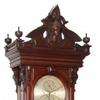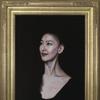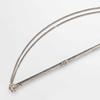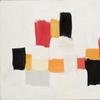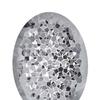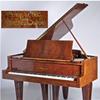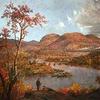'Van Gogh & Japan' Touring Exhibition Arrives in Amsterdam
- AMSTERDAM, Netherlands
- /
- March 21, 2018
On March 23, 2018, the Van Gogh Museum opens 'Van Gogh & Japan', a major international exhibition about the influence of Japanese art on the work of Vincent van Gogh.
With some sixty paintings and drawings by Van Gogh and a large selection of Japanese prints, the exhibition explores the extent of Van Gogh’s admiration for this form of art and the fundamental impact it had on his work. Exceptional loans from museums and private collections all over the world are coming to Amsterdam, among them Self-Portrait with Bandaged Ear (1889, The Courtauld Gallery, London), a painting that has not left the UK since 1955 and has not been shown in the Netherlands since 1930.
Other highlights include Van Gogh’s Self-Portrait (1888, Harvard Art Museums/ Fogg Museum, Cambridge, MA), Woman Rocking the Cradle(Augustine Roulin) (1889, The Art Institute of Chicago), Undergrowth with Two Figures (1890, Cincinnati Art Museum), La Crau with Peach Trees in Blossom (1889, The Courtauld Gallery, London) and The Arlésienne (Marie Ginoux) (1888, The Metropolitan Museum of Art, New York). It is the first time that an exhibition of this scope and scale has been devoted to this subject.
Under the spell of Japan
Van Gogh’s encounter with Japanese printmaking played a decisive role in the direction he took as an artist. During his time in Paris (1886–88) he became fascinated by ukiyo-e, nineteenth-century Japanese colour woodcuts, and began to collect them on a large scale.
What Van Gogh so admired about these colourful prints were the unconventional compositions, the large planes in bright colours and the focus on details in nature. The three remarkable paintings he made after Japanese prints while he was in Paris were his first exploration of this new artistic model.
Van Gogh swiftly came to identify Japanese art as a benchmark for his work, as we learn from the letters he wrote from Arles, where he moved in early 1888 with the idea that the South of France was ‘the equivalent of Japan’. He learnt to look ‘with a more Japanese eye’ and made ‘paintings like Japanese prints’. Van Gogh & Japan shows how Van Gogh began increasingly to work in the spirit of the oriental example, with the emphasis on a bold, colourful palette.
With some sixty paintings and drawings by Van Gogh and a large selection of Japanese prints, the exhibition explores the extent of Van Gogh’s admiration for this form of art and the fundamental impact it had on his work.
Exceptional loans
Van Gogh & Japan brings together famous paintings and drawings by Van Gogh from museums and private collections all over the world. Self-Portrait with Bandaged Ear (1889, The Courtauld Gallery, London), a very fragile painting that has not left the UK since 1955 and has not been shown in the Netherlands since 1930, returns to its ‘spiritual home’ in the Van Gogh Museum prior to the closure of The Courtauld Gallery for major renovation in the autumn of 2018. The Japanese print in the background to this famous self-portrait attests to Van Gogh’s love of this oriental art.
Another highlight is Self-Portrait (1888, Harvard Art Museums/ Fogg Museum, Cambridge, MA), in which Van Gogh pictured himself as a bonze, a Japanese Buddhist monk. It is an expression of the strength of his identification with the Japanese. This impressive painting has been loaned, as a great exception, for Van Gogh & Japan and can only be seen in the exhibition in Amsterdam.
Van Gogh & Japan also features a group of important portraits, including Woman Rocking the Cradle (Augustine Roulin) (1889, The Art Institute of Chicago). This is a spectacular example of Van Gogh’s endeavour to make paintings like Japanese prints, with striking colours and a highly decorative effect. The Arlésienne (Marie Ginoux) (1888, The Metropolitan Museum of Art, New York) is another masterpiece, in which the large planes of colour and strong outlines clearly reflect the influence of Japanese prints.
La Crau with Peach Trees in Blossom (1889, The Courtauld Gallery, London) is a view across the fields near Arles. Van Gogh associated these surroundings with Japanese landscape. He found his own ‘Japan’ in the South of France: strong sunlight, bright colours and beautiful countryside. The landscape Undergrowth with Two Figures from Auvers-sur-Oise (1890, Cincinnati Art Museum), with the extraordinary composition of rows of tree trunks, shows that Van Gogh continued to look with a ‘Japanese eye’ during this last period of his life.
These and other masterpieces are shown along with other works from the Van Gogh Museum, among them Courtesan (after Eisen), 1887, and Almond Blossom, 1890. As well as Japanese prints from Van Gogh’s own collection, the exhibition also features a great many prints from other collections, including the famous colour woodcut Under the Wave off Kanagawa (c. 1830–32, Rijksmuseum Amsterdam) by Katsushika Hokusai.
An exhibition catalogue is available.


